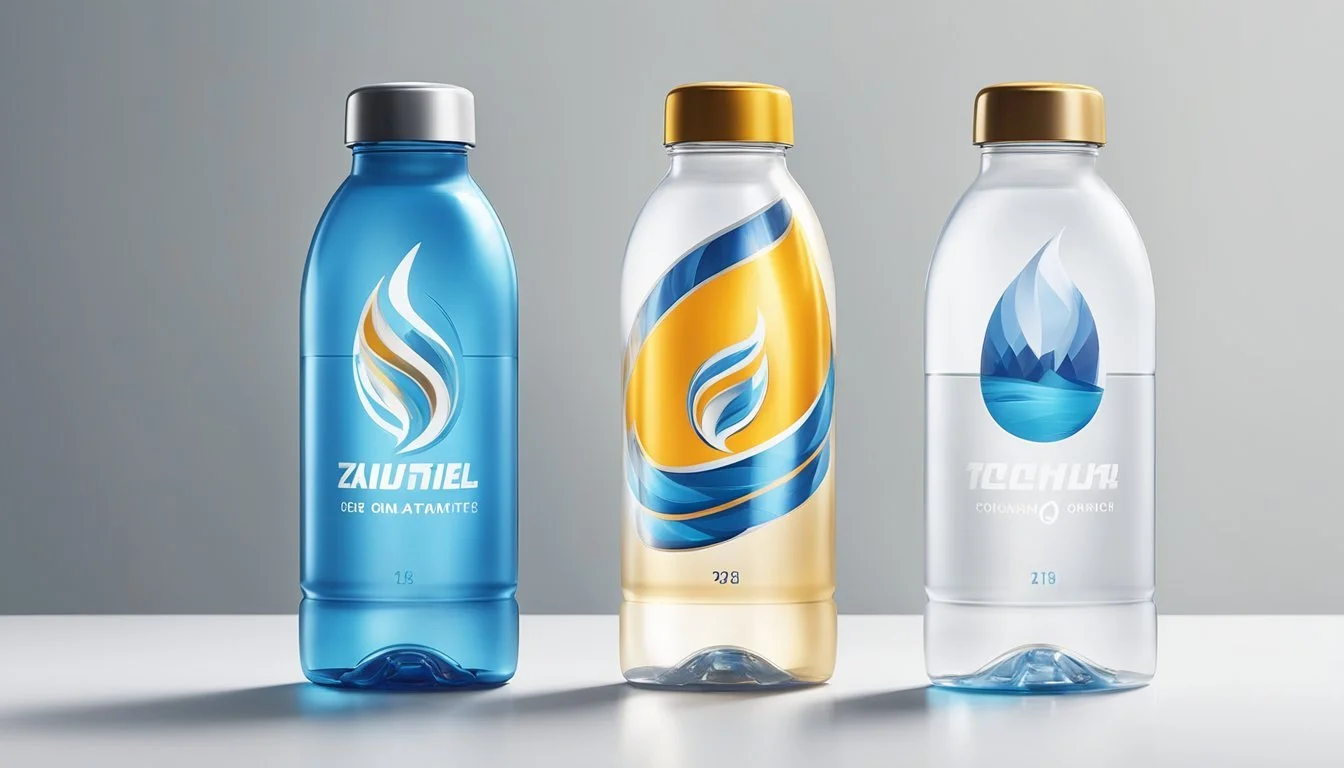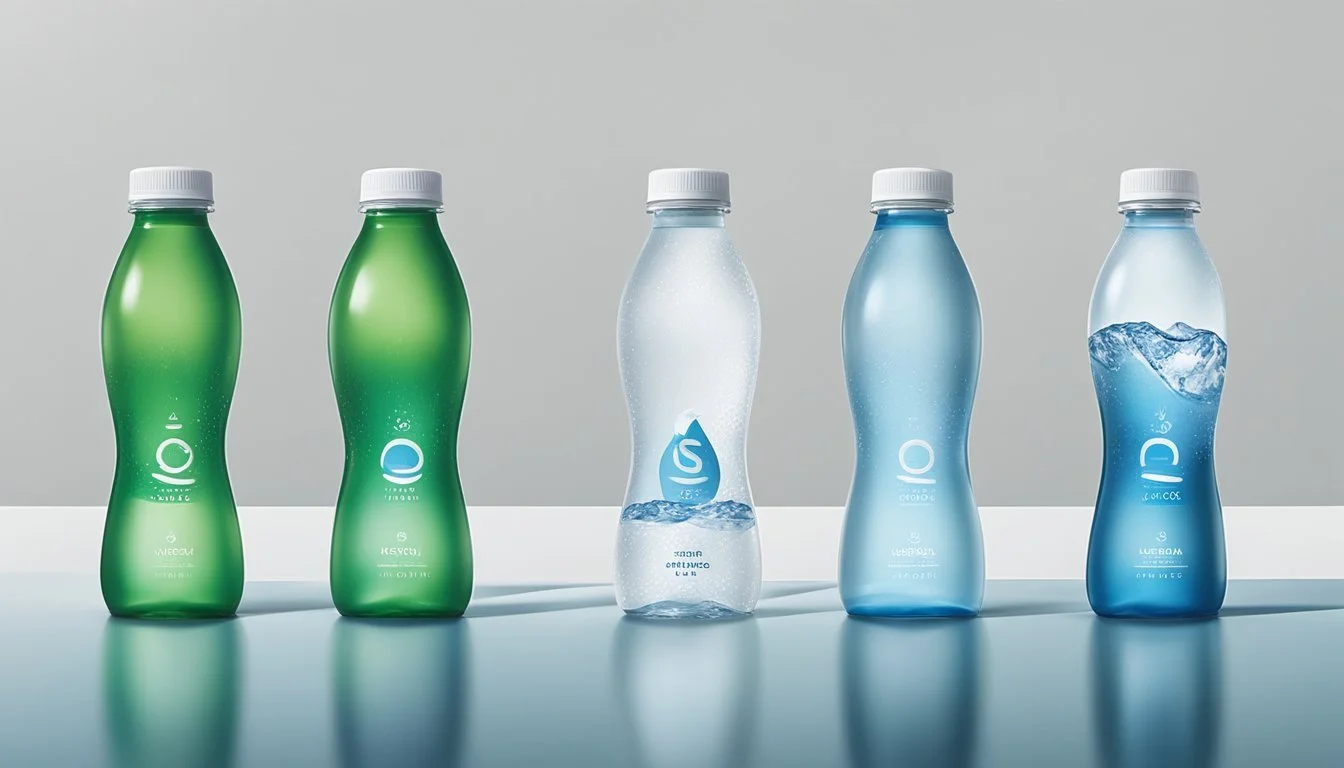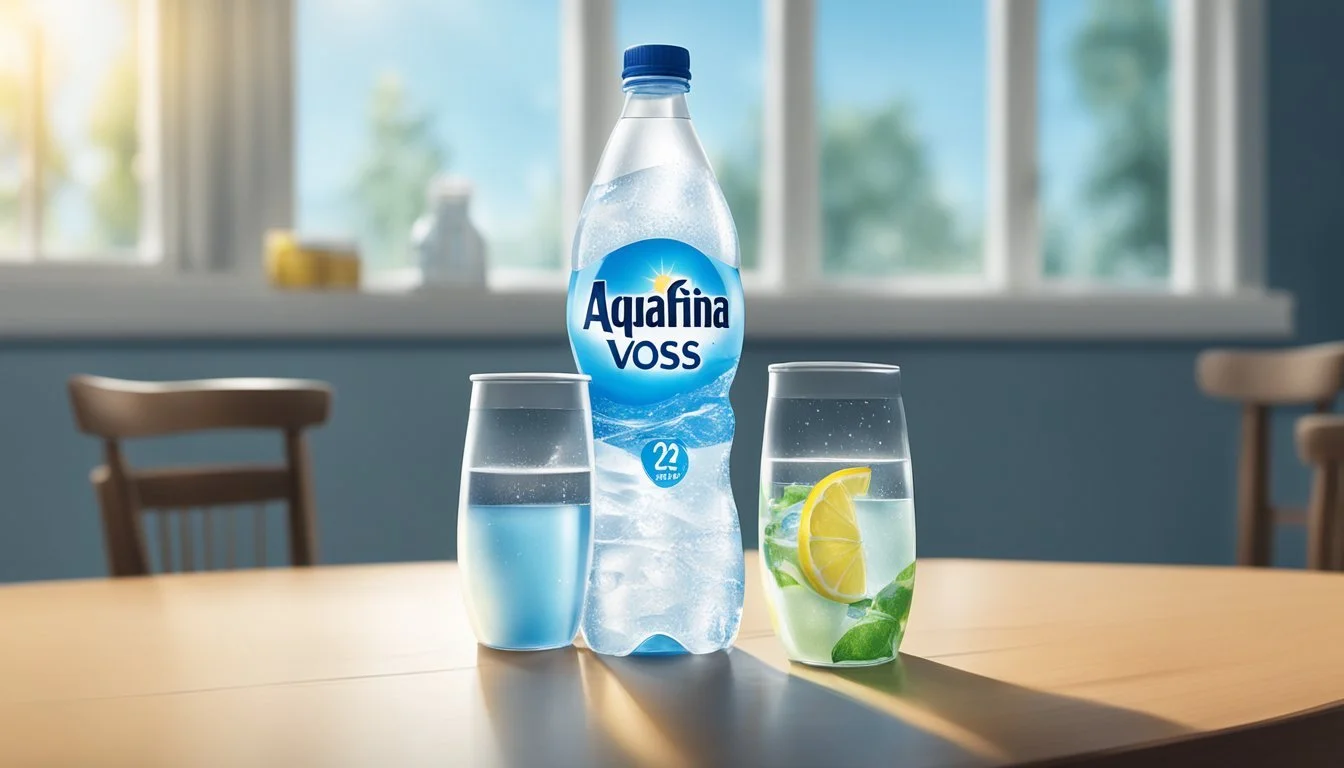Aquafina vs. Voss
An Expert Comparison on Bottled Water Quality
Bottled water has become a quintessential part of daily hydration for many, offering convenience and the perception of purity. Within the realm of bottled waters, Aquafina and Voss represent two brands that have garnered significant consumer attention. Aquafina, produced by PepsiCo, is purified drinking water that is well-known for its rigorous purification process, including reverse osmosis. Voss, hailing from Norway, presents itself as a premium brand of artesian water, boasting a minimalist design and a reputation for its taste and quality.
The debate between Aquafina and Voss extends beyond mere brand loyalty; it taps into consumer priorities such as taste, purity, environmental impact, and value for money. While Aquafina emphasizes its purification process, aiming to deliver consistent taste and quality across its products, Voss focuses on the source and packaging, presenting their product as not just water, but a lifestyle choice. These factors play a pivotal role in influencing consumers' decisions on which bottled water to choose.
Evaluating these two brands in the context of these consumer priorities offers an insight into the broader bottled water market, where personal preferences and beliefs converge with marketing narratives. As each brand vies for superiority in their niche, it becomes crucial to dissect their claims and consumer perceptions to determine which bottled water might be considered "better," depending on the criteria deemed most important by the consumer.
Bottled Water Industry Overview
The Bottled Water Industry has significantly grown, seeing the emergence of numerous brands competing on quality, source authenticity, and environmental practices.
Market Leaders and Competitors
The bottled water market is a competitive landscape dominated by major corporations. PepsiCo and Coca-Cola are key players with their respective brands, Aquafina and Dasani. Natural and premium waters like Fiji, sourced from volcanic aquifers, and Voss, from aquifers in Norway, are preferred for their purity. Nestlé encompasses a variety of brands, including Poland Spring and Pure Life, making it a substantial presence in the global market. Smartwater, another contender, offers electrolyte-infused variations that stand out.
Environmental Impact
The industry faces scrutiny regarding environmental sustainability. Single-use bottles, often containing BPA, contribute to plastic pollution. Brands like Evian and Icelandic Glacial promote environmentally friendly practices, reducing their carbon footprint and committing to using recyclable materials. Alternatives like boxed water or reusable bottles are gaining traction as consumers become more eco-conscious.
Water Sources and Natural Origins
Sources of bottled water are diverse. Brands like Mountain Valley draw from natural spring water in Arkansas. Voss claims pristine aquifers deep in Norway as its source. The famous French Alps provide the backdrop for Evian water, symbolizing purity and luxury. Fiji water touts its natural filtration through volcanic rock, while Poland Spring and Icelandic Glacial boast of sourcing from mountain spring water and underground springs, respectively. Access to these exclusive sources often determines a brand's image and market position.
Health and Hydration
When selecting bottled water, consumers should consider the presence of essential minerals and electrolytes, compliance with quality and safety standards, and the potential impact on body hydration and function.
Essential Minerals and Electrolytes
Both Aquafina and Voss waters lack significant levels of essential minerals and electrolytes, as they undergo purification processes that remove most of these elements. Aquafina's purification involves reverse osmosis and ozonation, resulting in water that's free from minerals like potassium chloride and magnesium sulfate. Voss, with its minimalist contents, may contain trace amounts of minerals, though not enough to contribute substantially to the body's daily mineral requirements.
Aquafina: No significant minerals or electrolytes.
Voss: Trace minerals present.
Quality and Safety Standards
Aquafina and Voss adhere to strict quality and safety standards. Aquafina uses a rigorous filtration process that includes ultraviolet light, reverse osmosis, and carbon filtering to eliminate contaminants and ensure purity. Voss, renowned for its source's natural purity, also undergoes filtration, but details on the specific processes are less publicized. Both brands maintain a neutral pH level, which is preferable for maintaining body's natural balance.
Filtration Process:
Aquafina: Ultraviolet light, reverse osmosis, carbon filtering.
Voss: Natural filtration (specifics not widely publicized).
Hydration and Body Function
While both Aquafina and Voss provide adequate hydration, neither is markedly superior in terms of body function. The pH level of both waters is close to neutral, with no high alkalinity that characterizes alkaline water. High pH water is often marketed for its supposed health benefits, but no strong evidence supports these claims over regular, neutral pH water. Therefore, both Aquafina and Voss are efficient for daily hydration needs.
pH Level:
Aquafina: Neutral.
Voss: Neutral.
Water Taste:
Aquafina: Clean, pure, no distinct taste.
Voss: Notably clean with a neutral taste profile.
Comparative Analysis of Bottled Waters
In this section, we evaluate two popular brands of bottled water, Aquafina and Voss. Their water sources, purification processes, and resulting taste are aspects that will be scrutinized for a thorough comparison.
Aquafina
Aquafina is a brand of purified water that undergoes a rigorous purification process. This includes reverse osmosis, ozone sterilization, and other filtration methods which ensure the removal of particles and contaminants. Aquafina markets itself as a provider of pure, clean-tasting water with no discernible mineral flavor due to the purification process it employs. This brand is well-known for its consistency in taste, which is a testament to its purification system.
Voss
Voss, on the other hand, is a brand of still water that takes pride in its Norwegian origin. The water from Voss is sourced from an artesian well in Norway, and because of its unique source, Voss water possesses minerals that contribute to its distinctive taste. Although Voss also undergoes a purification process, it maintains a mineral profile that distinguishes it from heavily purified waters like Aquafina.
Comparing Taste and Purity
The taste of Aquafina versus Voss reflects their differing approaches to bottling water.
Taste: Aquafina tends to have a neutral, clean taste given its lack of minerals, while Voss has a subtle mineral taste which some users might prefer for its freshness and complexity.
Purity: Both Aquafina and Voss claim high purity levels. However, Aquafina emphasizes its elaborate filtration for absolute purity, whereas Voss focuses on maintaining a balance between purity and mineral content.
When comparing the two, one's preference might hinge on whether they favor the crispness of Aquafina's purified water or the natural nuances of Voss's mineral content.
Consumer Considerations
When choosing between Aquafina and Voss, consumers weigh various factors that affect their purchase decisions. These factors include cost, availability, brand influence on lifestyle, and the practicality of packaging.
Price and Accessibility
Aquafina is often priced competitively and is widely available in grocery stores, vending machines, and convenience stores, making it an accessible choice for everyday hydration. Voss, in contrast, is positioned as a premium brand and carries a higher price point; as such, it may not be as readily found in typical retail outlets, but rather in high-end stores or restaurants.
Aquafina: Affordable and ubiquitous
Voss: Premium pricing with selective availability
Lifestyle and Brand Perception
The brand image of Voss is associated with luxury and exclusivity, often endorsed by celebrities and recommended by water sommeliers for its taste and packaging. Aquafina, meanwhile, is seen as a more practical choice with a focus on pure hydration without the frills. Other brands like Lifewtr and Core Hydration also position themselves as lifestyle brands, emphasizing artful packaging and enhanced water.
Voss: Luxury image with a high-end lifestyle appeal
Aquafina: Practical and utilitarian focus
Packaging and Convenience
Voss boasts distinct glass bottles which are often reusable and recyclable, appealing to environmentally conscious consumers. Aquafina's plastic bottles are convenient for on-the-go consumption and are also recyclable, aligning with the needs of a more casual consumer. Those interested in reducing plastic use may prefer alternatives like tap water with a Brita filter or Ethos Water, the latter of which contributes to global water causes with each purchase.
Voss: Glass bottles that cater to sustainability preferences
Aquafina: Lightweight plastic bottles for ease of use
Final Verdict
When comparing Aquafina and Voss, several factors come into play such as source, taste, price, and packaging. Aquafina is purified municipal water that undergoes a rigorous filtration process, which includes reverse osmosis. Voss, on the other hand, comes from a natural artesian source in Norway and is known for its purity and mineral content.
Taste Profile:
Aquafina: Crisp and clean taste due to its purification process.
Voss: Smooth and fresh from the source, with a notable mineral composition.
Price Point:
Aquafina is generally more affordable and widely available.
Voss is positioned as a premium brand and is priced higher, reflecting its market status.
Packaging:
Aquafina uses standard, recyclable plastic bottles.
Voss is notable for its distinct cylindrical glass or high-grade plastic bottles.
Environmental Impact:
Aquafina’s lightweight plastic bottles have a lower shipping footprint but contribute to plastic waste.
Voss provides glass options, which are more sustainable but heavier to transport.
Given these aspects, consumers prioritizing taste and presentation may prefer Voss. Those who seek an affordable, clean-tasting water and value wide availability might lean towards Aquafina. Ultimately, the choice between Aquafina and Voss comes down to personal preference and values, such as cost considerations and environmental impact.







